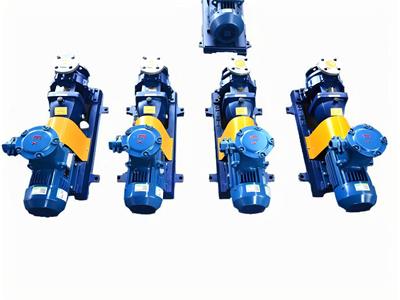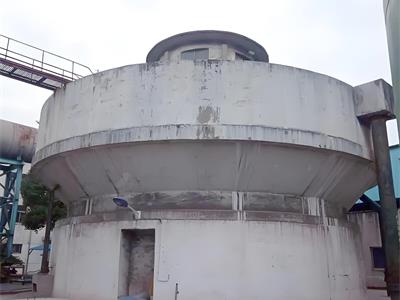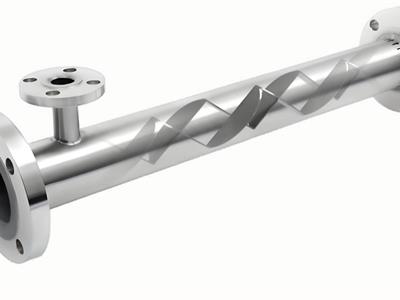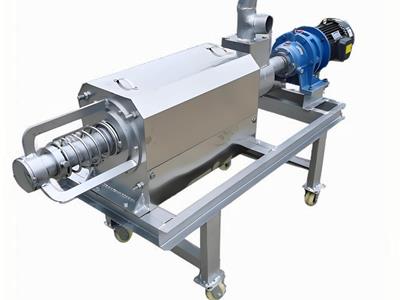- 2025-07-25
How to remove iron from well water? 6 easy steps!
Are you worried about rust, metallic taste and discoloration in your well water? This article will teach you how to identify iron in well water and deal with it in 6 steps. These methods can be used for well water, lake water, river water, salt water well water, and even swimming pool water with rust.
Why remove iron from well water?
Well water is groundwater. When it flows through iron-rich geological formations, it usually dissolves iron, resulting in various forms of iron in the water. If the iron concentration is too high, the well water will become turbid and may appear red, brown, orange or yellow. This discolored water will have a strong metallic taste and is not suitable for drinking, cooking, bathing or washing clothes. Long-term drinking of water with high iron content may cause gastrointestinal problems, iron poisoning and other health problems. After removing the iron, the taste, clarity and safety of the water can be improved.
Furthermore, iron in water reacts with oxygen to form rust, which can stain pipes, fixtures, and appliances. Over time, iron can combine with other ions to form scale, which can cause blockages and corrosion. This can damage plumbing systems and increase maintenance costs. Therefore, removing iron from well water is an economical and effective way to improve water safety, quality, and overall usability.
What forms does iron exist in well water?
Iron in water can generally be divided into five forms: ferrous iron, ferric iron, colloidal iron, organic iron, and bacterial iron.
Ferrous iron (Fe²⁺): It dissolves in water as an ion, similar to magnesium and calcium ions, and usually makes water appear colorless and transparent. However, if the concentration of ferrous ions in water is high, they are more likely to react with other substances to form precipitates or complexes. This is why your well water may appear yellow-brown, orange, and have a metallic taste.
Trivalent iron (Fe³⁺): Ferrous iron is easily oxidized to ferric iron. Ferric iron reacts easily with other substances in water, causing water pollution. Unlike ferrous iron, ferric iron has a lower solubility, so it usually exists in the water as suspended solids, such as ferric oxide (Fe₂O₃) and some other iron oxides. Well water containing ferric iron may have yellow, orange or red precipitates.
Colloidal iron: It exists stably in the water in the form of colloidal particles, which neither precipitate nor dissolve. The particle size is generally between 1 and 100 nanometers. It is formed by the reaction of iron ions with other substances in water.
Organic iron: This is an iron compound synthesized by bacteria attached to iron. In well water or soil, it appears as brown or bright red sludge. Bacterial iron can easily accumulate in wells, water treatment equipment, and pipes, thereby clogging or damaging pipe equipment.
Iron bacteria: This is a microorganism that often appears in groundwater, wells, and pipes with high ferrous iron content. Well water containing iron bacteria may have a metallic taste or foul odor, and the color may be black, red, orange, or purple. If left untreated, it may have an adverse impact on the ecological environment.
6 Steps to Remove Iron from Well Water
Step 1: Determine the Form of Iron in Water
This is the first step to remove iron from well water. You can roughly assess the water quality by observing the appearance of the water. If you are not sure, you can skip this step and go directly to the water quality test.
Clear and transparent water: It may contain ferrous iron. Consider using oxidation precipitation or water softener.
Turbid water (orange/brown): It means that the ferrous iron has been oxidized into sediment. You can try reduction precipitation, oxidation precipitation, coagulation or water softener.
Red water: It indicates that the concentration of trivalent iron is high and the oxidation is serious. Sedimentation filter or membrane filtration is a better solution.
Step 2: Test the quality of well water
Send a sample of well water to a laboratory or local water treatment company for comprehensive testing. This will accurately know the type, solubility and concentration of iron and other contaminants.
Because well water is groundwater, it is easily polluted by the environment. In addition to iron, you may also need to remove harmful substances such as heavy metals, bacteria, viruses, pesticides, nitrates, and chemicals. Based on the water quality report and specific needs, the water treatment company can provide tailored solutions to effectively solve all problems and help you save time and money.
Step 3: Choose the best water filter for iron-containing well water
After submitting the water quality report to the water treatment company, you will receive several water treatment solutions for iron removal. If you don’t know how to choose the best water filter for iron removal, here are some features, advantages and disadvantages of several water filters for iron removal.
Activated carbon filter: Activated carbon has adsorption properties and can remove small amounts of soluble iron and suspended iron particles in well water, so it can also be used for iron removal.
Advantages: Activated carbon filters are made of durable materials such as carbon steel or stainless steel, have a long service life, and are corrosion-resistant. This filter has a low investment cost and is simple to operate and maintain. It can effectively remove iron, large particles and odors from water without introducing chemicals.
Disadvantages: This system requires regular replacement of the filter medium activated carbon. It has a moderate iron removal capacity and may not be suitable for treating water with high iron concentrations. To improve performance, it is recommended to combine an activated carbon filter with a manganese sand filter to form a high-flow well water filtration system.
Sedimentation filter: Filtration accuracy can reach micron level. Sedimentation filters can remove iron from water to a certain extent, especially when the iron is in the form of large insoluble particles. It is more suitable for well water with low iron content.
Pros: Affordable. Sedimentation filters can be used as a pretreatment method for various water treatment applications and can also remove other suspended solids and particles in the water.
Cons: It cannot remove soluble iron and metallic odors from water. Harmful substances such as sulfur and arsenic may also be present in the water.
Softening system: Water softeners not only remove hardness from water, that is, calcium and magnesium ions, but also effectively remove iron from well water. This is because during the ion exchange process, anionic resins can absorb iron ions and then exchange them with sodium.
Pros: Water softeners are easy to install and operate and take up little space. Double tank water softeners can continuously treat well water without regular system regeneration.
Disadvantages: Water softeners are only suitable for well water with an iron concentration below 0.3ppm. This system requires regular cleaning and maintenance, especially the resin bed is prone to damage. In addition, the softening process will incur a certain salt consumption cost.
Oxidation filter/oxidation iron removal system: Oxidation filtration is the most common and effective way to remove iron from well water, and the iron removal effect is better than softeners. Its principle is to oxidize the ferrous iron in the water into particles that can be directly filtered by the filter. The oxidants used in this process are green sand, potassium permanganate, oxygen, hydrogen peroxide and chlorine.
Chlorine-based iron removal system: Chlorine-based oxidation filters use chlorine solution as an oxidant for iron. The ferrous ions in the water are oxidized to form precipitates or colloids such as iron oxide and iron hydroxide, which are suitable for filtration and removal, and then filtered through a granular activated carbon (GAC) filter.
Advantages: Chlorine oxidation is relatively mature and efficient in water treatment, and can also remove other harmful substances in the water. Chlorine-based oxidation is economical and efficient, and is widely used in water disinfection and water quality improvement for municipal water supply.
Disadvantages: Compared with other oxidants, chlorine is not very effective and is not suitable for well water with an iron concentration of more than 8 PPM. Chlorine is mainly used to remove microorganisms, odors and parasites in water, and is not the main oxidant for iron. High concentrations of iron ions need to be in contact with high concentrations of chlorine for a long time to completely oxidize. There are potential risks in handling high concentrations of chlorine solutions during operation.
Aerated iron removal system: Oxygen is a cost-effective oxidant that can remove iron, manganese and sulfur. The aeration device in the iron filtration system increases the oxygen content of the water by injecting air into the water. The oxygen (O₂) in the air will react quickly with the iron and manganese in the water to form filterable precipitates. It should be noted that this system is not suitable for well water with low pH or containing IRB (iron-reducing bacteria) or SRB (sulfate-reducing bacteria). A backwash device needs to be installed at the end of the system to remove sediment.
Advantages: Oxygen is a low-cost oxidant. The entire treatment process does not use any chemicals, making it a green and sustainable solution. In addition to removing iron from water, it can also remove odor, arsenic, manganese, hydrogen sulfide and other harmful substances.
Disadvantages: It is not suitable for treating high concentrations of iron, such as concentrations exceeding 5ppm. In addition, this system requires the installation of a contact tank and an air pump, and water noise may be generated during operation. Improper operation may cause iron sludge accumulation.
Ozone iron removal system: The oxidation iron removal system is suitable for treating water with an iron concentration of less than 5ppm. Its principle is similar to that of aeration iron removal. Ozone produced by electrolysis or ultraviolet irradiation is introduced into the water, oxidizes iron, forms insoluble oxides, and is then filtered out. Unlike aeration, ozone has a higher solubility in water than oxygen, so aeration is not required. Ozone iron removal systems are widely used in the disinfection and sterilization of swimming pool water.
Advantages: Ozone has strong oxidizing properties. Only a small amount of ozone is needed to effectively eliminate odors and discoloration, and can also remove heavy metal ions in water, such as iron, manganese and nickel. Moreover, the ozone iron removal system is almost unaffected by the pH value and temperature of the water.
Disadvantages: Ozone is toxic, and operators need to have certain professional knowledge. Because ozone generators are energy-intensive equipment, producing ozone consumes a lot of energy, resulting in high equipment investment and operation and maintenance costs. In addition, when the well water contains a large amount of organic matter, the efficiency of ozone iron removal will be significantly reduced.
Hydrogen peroxide iron removal system: Hydrogen peroxide (H₂O₂) is a more effective oxidant than oxygen. Liquid hydrogen peroxide is injected into the well water to allow it to fully react with the iron in the water. The precipitate formed by iron oxidation can be separated and filtered through the sedimentation tank and filter in the system. Hydrogen peroxide is suitable for treating well water with medium iron content, generally 1 to 5ppm.
Advantages: Hydrogen peroxide-based iron removal systems are easy to install and operate, and have low maintenance costs. The entire process does not produce sludge or other chemicals.
Disadvantages: Hydrogen peroxide is corrosive and irritating, and there are safety hazards in the operation process. Moreover, if a large amount of hydrogen peroxide is required, the cost will be higher than other oxidants.
Manganese green sand aeration filter/potassium permanganate iron removal system: Potassium permanganate solution oxidizes ferrous iron in water into ferric iron, and oxygen is produced in the process, which accelerates the oxidation of iron. Similar to the previous iron removal method, iron oxide and iron hydroxide will precipitate and be filtered. Finally, just remove the potassium permanganate and other substances remaining in the system. This method is suitable for treating groundwater and well water with iron concentrations of 5 to 10 ppm. When treating groundwater with high iron content, manganese green sand can be used as an oxidant.
Advantages: Potassium permanganate has strong oxidizing properties. In addition to removing iron, manganese, and sulfides from water, it can also remove organic matter, microorganisms, color, odor, etc. from water.
Disadvantages: Potassium permanganate is purple, and it is easy to discolor the water body after dissolving in water, affecting the beauty of the water quality. If excessive potassium permanganate is not handled properly, it may cause water and environmental pollution. In addition, the entire system needs to be backwashed and regenerated frequently to ensure stable operation and good water quality.
Ultrafiltration filter: Ultrafiltration (UF) filters use semipermeable membranes to effectively remove bacteria and larger impurities, including soluble and suspended iron particles, from well water, thereby improving water quality.
Pros: UF filters are efficient, durable, and corrosion-resistant, ensuring long-term performance. They are user-friendly and low-maintenance, making them a cost-effective water treatment solution.
Cons: Although UF filters can reduce iron content, their effectiveness may be limited for high concentrations of dissolved iron. Regular monitoring and maintenance are critical, and it may be necessary to combine UF with other treatment methods (such as reverse osmosis) to achieve optimal results.
Reverse osmosis water filter: The filtration accuracy of reverse osmosis systems can reach nanometers. When pressurizing highly concentrated solutions, iron ions cannot pass through the pores of the reverse osmosis membrane with water molecules, but are trapped on the other side of the semipermeable membrane, thus achieving the purpose of removing iron from well water.
Pros: RO water is of good quality and can be drunk directly. In addition to removing iron, RO can also remove larger suspended particles, colloids, bacteria, viruses, heavy metal ions and minerals from well water. As an advanced water filtration technology, RO does not cause chemical pollution to the environment. The entire system is highly automated and can ensure stable water quality.
Disadvantages: Compared with other well water iron filtration systems, RO well water filtration systems are still relatively expensive. RO devices require regular maintenance and membrane replacement. In addition, the large amount of wastewater generated during the operation of the reverse osmosis system is also a concern for many potential users.
Step 4: Purchase and install the best iron removal filter
After selecting and purchasing the best iron removal filter according to your budget and requirements, the next step is to install the well water iron filtration system.
For simple systems, you can refer to the product manual or online instructional videos provided by the manufacturer to install it yourself. However, steps such as connecting water pipes, water pumps and faucets are recommended to be helped by plumbers or water treatment company professionals.
If you are looking for reliable iron removal filtration products, why not take a look at our range of professional products. We provide professional consulting services and comprehensive after-sales support to ensure that we can help you find a solution that suits your well water needs. Click the link below to learn more about our iron removal solutions and find the one that best suits your needs.
Step 5: Test Water Output
After installing your iron removal filter, you may still have concerns. Be sure to collect treated well water from the system's production point and send it to a lab for water quality testing. If the iron content in the water is still high or other harmful substances are detected, contact your well water purification system supplier or installer immediately. Consult a professional to find out the cause of this situation and solve it. You may even need to consider other filtration methods to minimize losses.
Step 6: Equipment Maintenance
Congratulations! After completing this step, you can enjoy healthy, safe, and iron-free water. However, be aware that you still need to regularly maintain the equipment, such as replacing parts, backwashing the system, regenerating, etc.
Regular cleaning and maintenance of the system can extend its life and reduce the cost of obtaining fresh water every day. When the productionWhen water quality deteriorates or the efficiency of the equipment decreases significantly, it is time to consider replacing the consumables or the entire iron removal filter.
Summary
Follow these 6 steps and you will be able to effectively remove iron from your well water and use clean and safe water. If the iron content in your well water is over 10ppm, this article may not provide you with enough help to remove rust and iron from your well water.
We recommend that you contact FupengWater for a personalized solution. Our engineers have 25 years of experience in well water iron removal. We can help you remove iron and various other harmful substances from your well water. Test your water quality now and choose a filtration system that best suits your needs!
FAQ
What is the acceptable iron content in well water? : For drinking water, the World Health Organization recommends that the iron concentration in well water should not exceed 0.3ppm. If the well water is used for non-drinking purposes, such as washing, laundry or agricultural irrigation, then iron concentrations below 1ppm are acceptable. However, please note that these standards are only for reference.
Can water be boiled to remove iron? : No. Iron is always in the form of a dissolved or precipitated solid in water. Boiling can only kill bacteria and viruses in well water by high temperatures. Just like you can't remove dissolved sugars or insoluble sediments from water by boiling.
Why did my well water suddenly rust? : If your clear, pure well water suddenly develops rust after a period of time, it may be because the ferrous ions (Fe²⁺) have oxidized. Dissolved iron in water is colorless. When well water is still, it comes into contact with oxygen in the air. Fe²⁺ is oxidized by oxygen to Fe(OH)₃ and Fe³⁺, which form rust.
How to remove iron bacteria from well water? : The lack of oxygen, moderate temperature, and neutral to acidic pH create an ideal environment for iron bacteria to survive and reproduce. We recommend combining oxidation filtration and disinfection technology to effectively remove iron bacteria. The oxidation filter can convert all ferrous ions in the water into filterable ferric ions (Fe³⁺). The filtration process can effectively remove iron bacteria, iron-containing sediments, and large particles in well water. Finally, using ultraviolet disinfection or chlorine can effectively kill potential bacteria in the water and prevent the recurrence and proliferation of iron bacteria.
How to remove tannins from well water? : If your well water is acidic, bitter, and brown or tan, you should not only pay attention to the iron content in the water, but also pay attention to removing tannins. Tannins and organic compounds may be carried by water when it flows through pipes, plant roots or soil. When tannins exist in the water in the form of large particles of colloids, you can consider removing them directly through filtration or precipitation methods (such as activated carbon filters). If the tannin content in the well water is not too high, a softening water system is also a viable option. Softening water can remove minerals from the water and also remove some organic substances, including tannins. If tannins exist in soluble form in the water, they can be oxidized into gas or solid form and then separated from the water using oxidants such as ozone, chlorine and hydrogen peroxide. Finally, reverse osmosis water filters can remove almost all large particles, microorganisms, organic compounds and soluble salts in the water. No matter what form tannins exist in, reverse osmosis systems can effectively remove them.
How to remove iron from well water without a water softener? : If you don't want to use a water softener to filter iron from well water, how about sedimentation filtration, membrane filtration, oxidation filtration, aeration filtration, and activated carbon filtration? Filtration and sedimentation can naturally remove iron from well water. The choice of water treatment method for iron removal mainly depends on your budget, water quality requirements, and the concentration of iron in the well water.
What is the cheapest way to remove iron from well water? : The investment and maintenance costs of sedimentation filters are relatively low. However, FupengWater believes that the cheapest way to remove iron from well water should be viewed relatively, that is, to solve various water treatment problems with the least money. Blindly pursuing the lowest price solution may result in water treatment results that do not meet your expectations. In addition, you have to consider the cost of replacing the iron removal system and the high maintenance and repair costs of the equipment.






